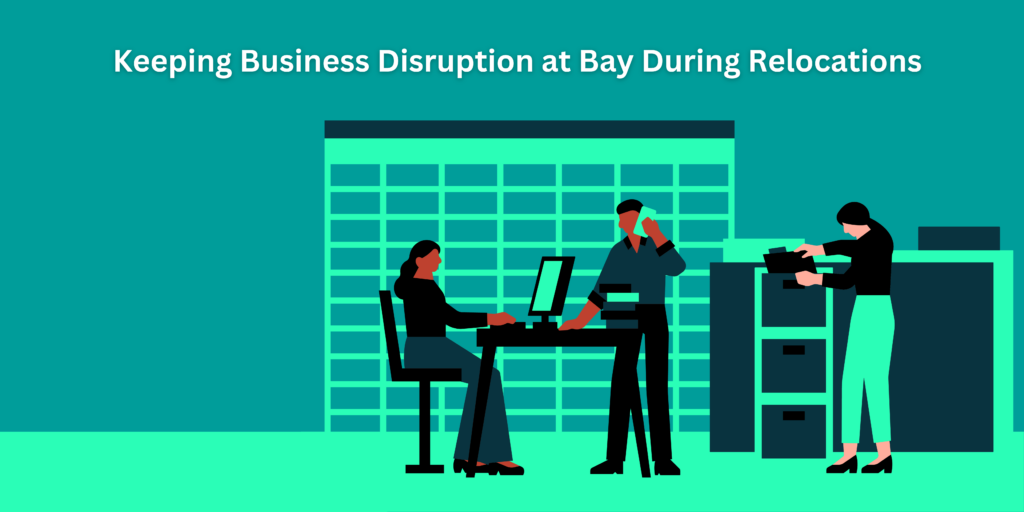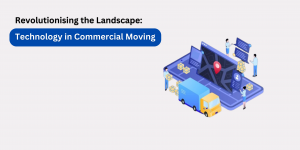Business relocations are significant milestones in a company’s life. They often signify growth, expansion, or a fresh start in a new location. However, they can also bring about numerous challenges and disruptions if not managed effectively. The key to a successful business relocations lies in careful planning and execution. In this article, we will explore various strategies and best practices to keep business disruptions at bay during relocations.
Proper Planning
Proper planning is the cornerstone of a successful business relocation. The more time and effort you invest in planning, the smoother the transition will be. Here are some essential aspects of planning:
1. Create a Detailed Relocation Timeline
Start by creating a comprehensive relocation timeline that outlines all the critical milestones. This timeline should include tasks like finding a new location, notifying stakeholders, packing, and transportation logistics. Assign responsibilities and set deadlines to ensure everything stays on track.
2. Identify Key Stakeholders And Assign Responsibilities
Clearly define the roles and responsibilities of key stakeholders in the relocation process. This includes project managers, department heads, and employees. Everyone should know their responsibilities and be accountable for their part in the move.
3. Anticipate And Mitigate Potential Issues
Through careful planning, you can anticipate potential issues and develop strategies to mitigate them. Consider factors like weather conditions, local regulations, and unexpected delays. Having contingency plans in place will help you respond effectively to unforeseen challenges.
Communication and Employee Engagement
Relocations can be unsettling for employees, as they may fear the unknown and worry about job security. Transparent and consistent communication is essential to keeping employees engaged and informed.
1. Transparent and Consistent Communication
Provide clear and honest communication about the reasons for the relocation, the timeline, and how it will impact employees. Address concerns openly and honestly, even if you don’t have all the answers. Regular updates will help build trust and reduce anxiety.
2. Involve Employees in the Planning Process
Engage employees in the planning process by seeking their input and feedback. They often have valuable insights that can inform decisions about the new location, office layout, and logistics. Involvement can foster a sense of ownership and commitment among the workforce.
3. Address Concerns and Provide Support
Be proactive in addressing employee concerns. Offer support services such as counseling or assistance with finding housing for those affected by the relocation. Providing resources and support can alleviate stress and anxiety among employees.
4. Maintain Morale and Productivity
Maintaining employee morale and productivity during the transition is crucial. Consider team-building activities, recognition programs, or small perks to keep spirits high. Encourage teamwork and collaboration to help employees adapt to the changes.
Choosing the Right Location
Selecting the right location for your new business premises is a critical decision that can significantly impact the success of your relocation.
1. Proximity to Suppliers, Clients, and Employees
Choose a location that minimizes disruptions to your supply chain, makes it easy for clients to access your services, and reduces commuting challenges for employees. Consider factors like transportation infrastructure and accessibility.
2. Assessing the Accessibility of the New Location
Analyze the accessibility of the new location for both employees and clients. Adequate parking, public transportation options, and proximity to major highways can make a significant difference in the daily operations of your business.
3. Aligning With Company Needs and Goals
Ensure that the new location aligns with your company’s needs and long-term goals. Consider factors like expansion opportunities, potential market reach, and the local business environment.
Technology and Data Migration
In today’s digital age, technology, and data play a crucial role in business operations. Ensuring a smooth transition for your digital assets is paramount.
1. Safely Transferring Digital Assets and Data
Work with your IT team or external experts to carefully transfer digital assets and data. Ensure that all hardware and software are properly packed and protected during the move.
2. Working with IT Experts
Engage IT experts who specialize in relocations to help you plan and execute the technology and data migration. Their expertise can save you time and prevent costly disruptions.
3. Minimizing Downtime
Downtime can be detrimental to business operations. Develop a detailed plan for minimizing technology-related disruptions during the move. Consider alternatives like temporary remote work arrangements or backup systems.
4. Ensuring Data Security
Data security is a top priority. Implement stringent security measures to protect sensitive data during the relocation.
Professional Relocation Services
Hiring professional relocation services like packers and movers in Pune, Delhi, Bangalore, etc. can make a world of difference in the success of your move.
1. The Benefits of Hiring Professional Relocation Services
Professional relocation services bring experience and expertise to the table. They are well-versed in the intricacies of planning and executing seamless relocations.
2. Choosing the Right Relocation Company
Select a reputable relocation company of packers and movers in Pune with a track record of successful moves. Check references and reviews to ensure they have the expertise and resources needed for your specific relocation.
3. Handling Logistics
Relocation experts can efficiently manage logistics, such as packing, transportation, and unpacking. Their experience ensures that your assets are handled with care.
4. Cost Considerations and ROI
While professional services come at a cost, consider the long-term return on investment (ROI). Minimizing disruptions and ensuring a swift transition can lead to cost savings and quicker business recovery.
Continuity Planning
Even with meticulous planning, unexpected challenges can arise. A robust continuity plan is essential.
1. Creating a Business Continuity Plan
Develop a comprehensive business continuity plan that outlines how you will maintain critical functions and dependencies during and after the move.
2. Identifying Critical Functions and Dependencies
Identify the core functions and dependencies within your organization. This includes critical processes, key personnel, and essential suppliers. Develop strategies to keep them operational.
3. Strategies for Maintaining Operations
Implement strategies such as temporary workspaces, backup systems, or outsourcing certain functions to ensure business operations continue without significant interruptions.
4. Preparing for Unexpected Challenges
Expect the unexpected and be prepared to adapt. Regularly review and update your continuity plan to address new risks and challenges.
Testing and Quality Assurance
Testing and quality assurance are vital steps to ensure that everything runs smoothly before and after the relocation.
1. The Importance of Testing Systems and Processes
Conduct thorough tests of all systems and processes before the move. Any problems or inefficiencies should be identified and fixed.
2. Conducting Trial Runs
Perform trial runs to simulate various scenarios and challenges that may arise during the relocation. This will help your team prepare and respond effectively.
3. Ensuring That all Business Operations Run Smoothly
It’s critical to verify that all business operations run smoothly after the move. Monitor performance and address any lingering issues promptly.
Post-Relocation Evaluation
After the relocation is complete, it’s essential to evaluate the process and gather feedback for continuous improvement.
1. Assessing the Success of the Relocation Process
Evaluate the overall success of the relocation process by comparing it to your initial goals and expectations. Did you meet your timeline, budget, and quality objectives?
2. Gathering Feedback from Employees and Stakeholders
Collect feedback from employees, clients, and other stakeholders who were directly or indirectly affected by the relocation. This feedback can provide valuable insights into what worked well and where improvements are needed.
3. Making necessary adjustments and improvements
Use the feedback and lessons learned from the relocation to make necessary adjustments and improvements to your relocation strategy. This could involve refining your planning process, updating your continuity plan, or enhancing communication practices.
4. Celebrating Successful Transitions and Accomplishments
Recognize and celebrate the successful completion of the relocation. Acknowledge the hard work and dedication of your team and show appreciation to employees who contributed to a smooth transition.
In conclusion, by involving employees, selecting the right location, safeguarding technology and data, and leveraging professional relocation services, you can ensure a seamless transition to your new business premises. Additionally, a well-thought-out continuity plan, rigorous testing, and post-relocation evaluation will help you navigate the challenges and emerge from the relocation stronger and more resilient than ever. Remember that each relocation is unique, and adaptability is key. By prioritizing the strategies outlined in this article and tailoring them to your specific circumstances, you can successfully navigate the complexities of business relocations and position your company for future growth and success.



